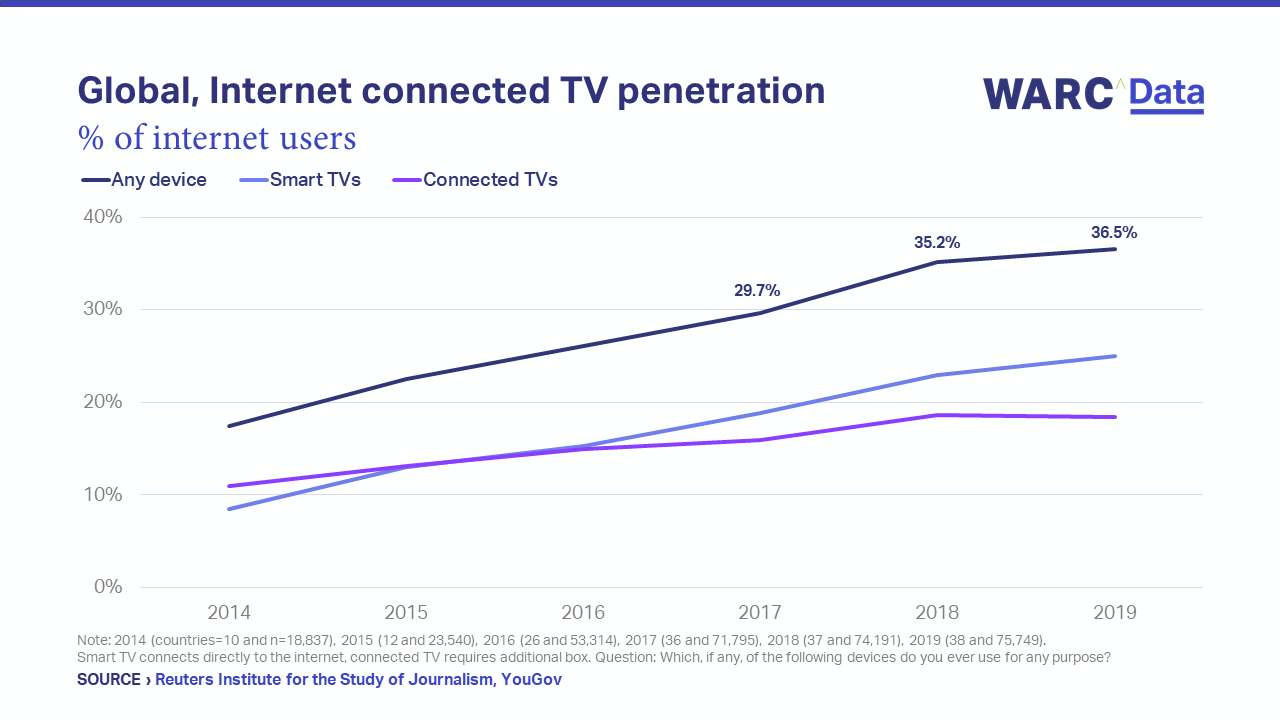Industry excitement is growing around the transformative potential of addressable TV advertising. This may be a little premature, writes Alex Brownsell.
2019 has been a “breakthrough year” for addressable TV, according to Jamie West, Sky Media’s soon-to-depart Deputy Managing Director.
Speaking at this week’s Future of TV Advertising Global conference in London, West argued that UK brands now consider addressable TV – using data to target consumers with TV ads at a household level – to be a “viable option”. He cited research carried out by the pay-TV provider earlier this year, showing that 70% of advertisers (including new-to-television SMEs) to have used Sky Media’s AdSmart addressable technology have returned following an initial trial run.
There was certainly a palpable excitement among attendees. Just as programmatic digital advertising heralded the arrival of a blizzard of ad tech start-ups to facilitate ad buying, selling and data management, so too a new clutch of specialists are emerging to capitalise on growth in addressable TV. “It’s like they can smell the money,” as one delegate wickedly quipped to me.
He has a point. As reported in WARC’s recently-published Marketing Toolkit 2020, while marketers have been left disappointed by programmatic in online display and social media, its next phase will be defined by quality media environments. Automation is coming to so-called ‘traditional’ channels in the form of digital OOH, audio streaming and, yes, addressable TV.

However, as is often the case, tech vendors are attempting to run when the industry has scarcely broken into a gentle stroll. For the time being, much connected TV advertising investment will focus on ad unit insertions around on-demand content, exemplified by broadcaster ITV, which has partnered with ad tech firm Amobee to serve addressable ads on its VOD service, ITV Hub.
The most interesting opportunities will arise when TV companies and OTT providers can dynamically insert tailored and targeted video ads into live television streams. Viewers are on average 21% more engaged by addressable ads, and attentiveness can be as much as a third higher (35%), according to Sky Media.
Many hurdles remain, not least the lack of any form of consistency in trading across broadcasters, set-top box owners and television OEMs. A debate continues to rage about whether to measure connected campaigns in the language of linear TV or the vernacular of digital media. There is also the small matter of the eyeballs being lost to ad-free SVOD services like Netflix and Amazon Prime Video, with new entrants like Disney landing next year.
Sam Taylor, Head of Group Commercial Marketing at Direct Line Group – an insurer with first-hand experience of TV media’s brand-building and reach credentials – suggested that addressable TV remains an expensive folly. He claimed that until the industry reaches a “tipping point” in the reduction of cost of addressable inventory and an increase in linear TV rates, brands must make a choice between “wastage” of linear and the premium cost of a more targeted approach.
“For us, looking through an effectiveness lens, you only pay for what works, [and we] still prefer linear ‘wastage’,” Taylor said.
The US television market appears primed and ready to accelerate into an addressable future, especially in light of media consolidation and the convergence of content, distribution and audience data into the hands of firms like Verizon, AT&T and Comcast. In Europe and further afield, this transition may take a little longer.
Read more in: Marketer's Toolkit 2020: Context and connected TV – Reinventing programmatic (Technology)

